We started our trip with an excursion to the Coliseum, the model for most modern sports arenas. Technical feats accomplished in its construction included platforms under the stage that would lift and lower combatants in the 'bread and circus games' and a huge canopy that apparently unfurled over the entire seating area during inclement weather. 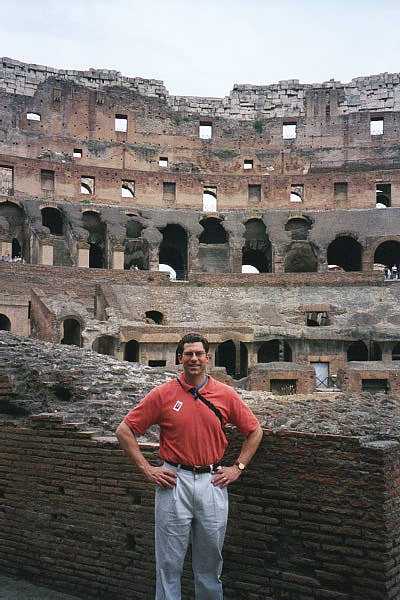
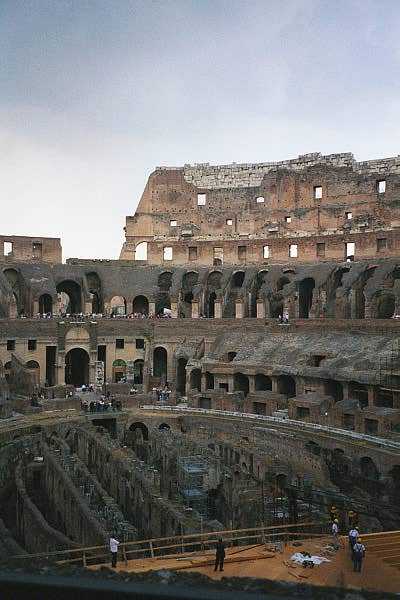
Looking out from the Coliseum one can see the foyer of Nero's palace (below, left: it's about 20 times bigger than our house, let alone our foyer). From a different angle, you can see a victory arch that (if I'm remembering correctly) Napoleon had built using in part stones pilfered from the coliseum (below, right). 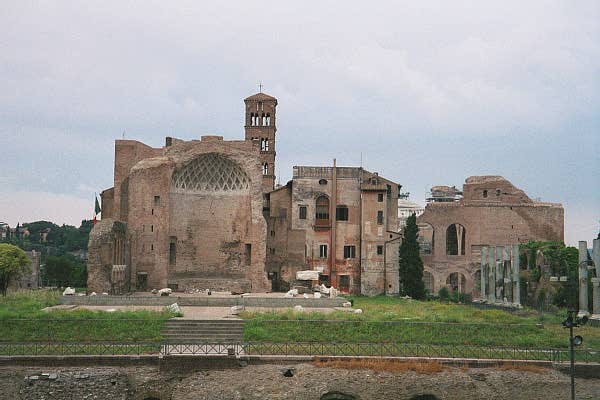
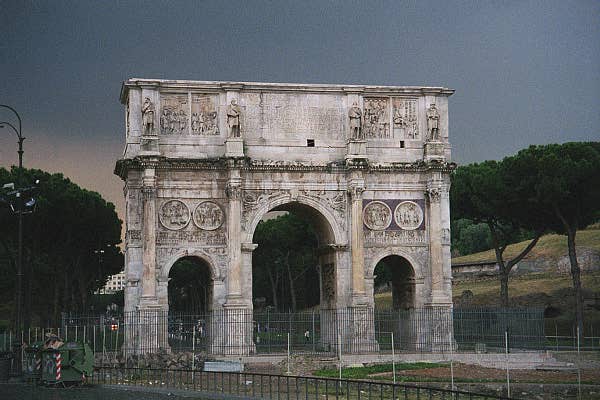
One of our favorite aspects of Rome was the immediacy of history: structures over 2000 years old were right there to touch and lean on and walk around. In the picture below on the left, Tom is leaning on a decorative corner that fell from a temple over 2000 years old. We could see the structure it fell from just by looking up (picture, below right). 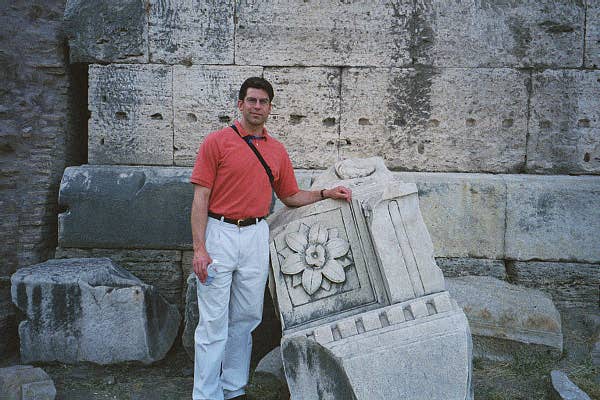
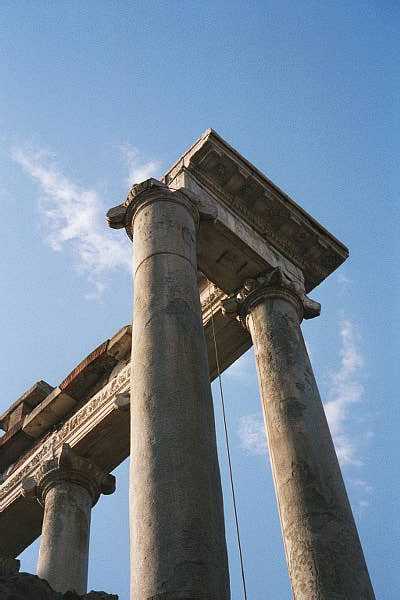
It quickly became clear to us that our maps of Rome were not actually intended to get a person from point A to point B. They had lots of nifty illustrations, blow-ups of the monuments you would see if and when you happened upon the place you were going, and sometimes a street name or two thrown in just for giggles, but avoided fussy details like accurate spatial relationships or complete sets of labels. In our misdirected wanderings, however, we came across some wonderful and surprising sights that we might not have known were there. (For example, there were a set of four beautiful small fountains, each sculpted to represent a season, on each corner of one intersection. In San Francisco they would be a major tourist attraction; in Rome we stumbled upon them looking for something else. What a great city!)
For dinner on our first night, we started out from the Campidoglio facing the set of streets you see below, and after about an hour and a half of crossing and re-crossing the web of streets finally found Myosotis, a Fodor's recommended restaurant and a truly wonderful meal. (Mary is triumphantly pointing to its location -- or where it would have been located, had its street been on the map -- below right.) 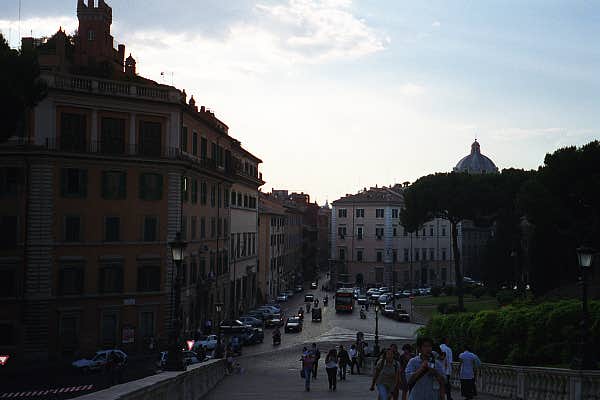
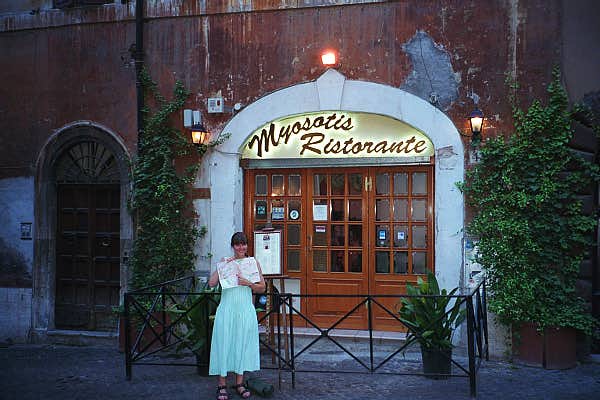
Favorite Places in Rome In the course of our four days in Rome, we visited the Villa Borghese museum (Tom is pictured in the gardens, below) which we loved every inch of; the Vatican; the Sistine Chapel; and a number of smaller churches where amazing sculptures such as the Rapture of St. Therese by Bernini were part of normal parish decor. 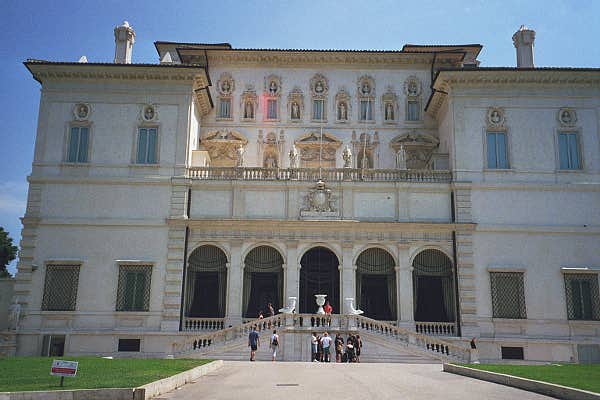
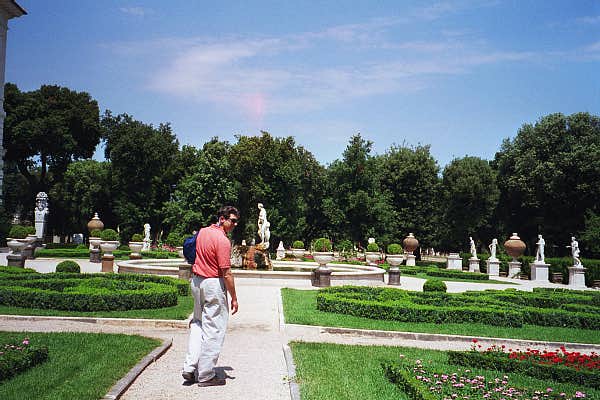
The Vatican was truly awe-inspiring. The cupids at the holy water fonts are larger than we are. Since this is the Catholic Jubilee year, there were blue-smocked volunteers posted everywhere to help tourists, which was a lovely gesture. English-speakers were rare, though: when we got to the Vatican we asked a blue-clad nun, "Parl' Inglese?" to which she happily replied, "Oui!"
We did muddle through our limited Italian to get the Mass schedule, and stayed for a beautiful Italian Mass that we understood more of than we expected we would.
The Swiss guards take their job very seriously, and while we were awed enough to avoid trying to engage them in conersation we couldn't resist photographing one of them.
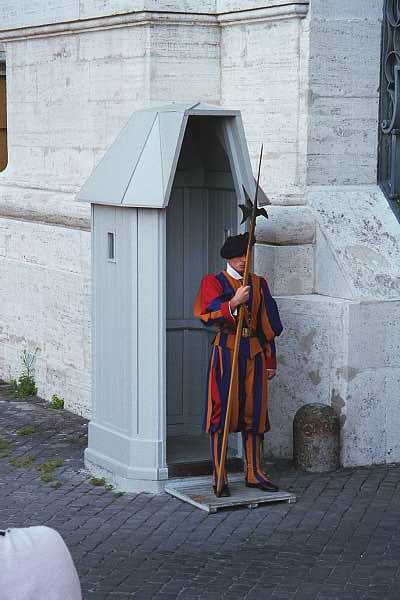
We finished our stay in Rome feeling that one year might not be enough time to see everything. We'll just have to keep coming back!
|



